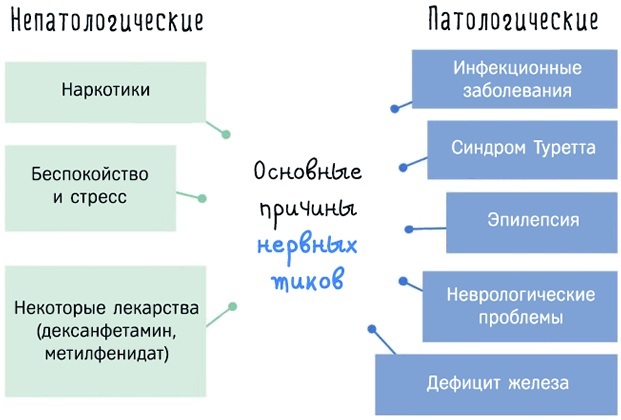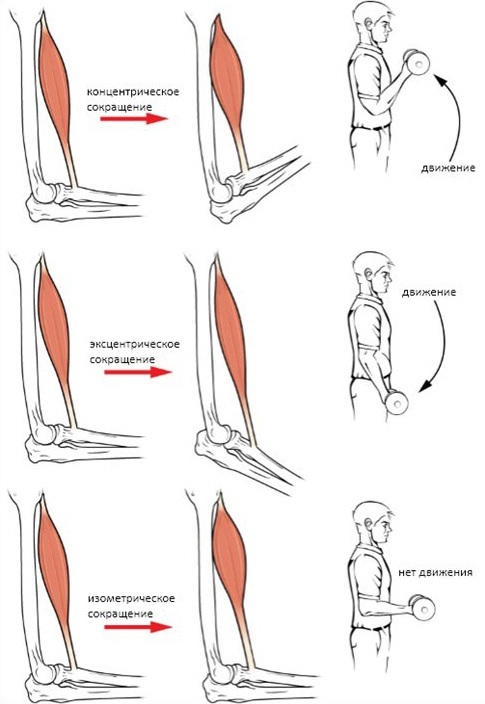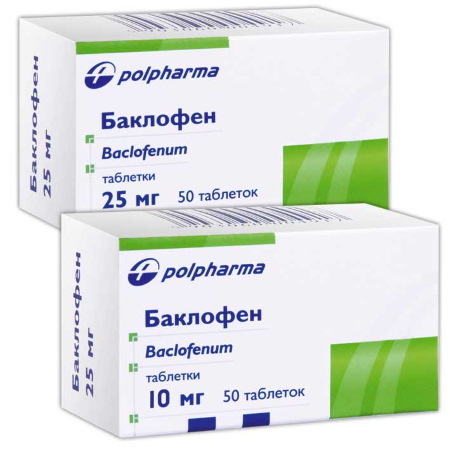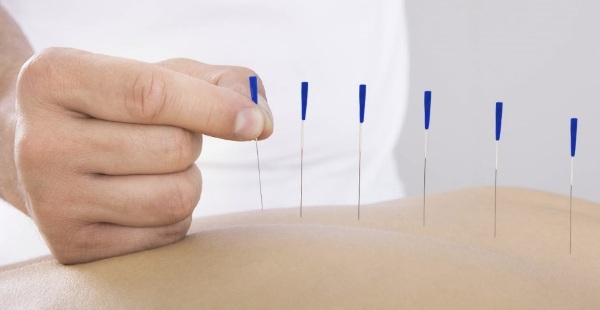Content
- Why does involuntary twitching of muscles throughout the body occur at rest
- On arms and legs
- On the shoulder
- Nose
- Eye
- Head
- On the back
- Types of muscle contractions and possible pathologies
- Diagnostics
- Treating the problem
- Taking medications
- Massage procedures
- Psychotherapeutic methods
- Exercise therapy
- Food
- Folk methods
- Consequences if untreated
- Muscle Twitch Videos
Muscle cramps are commonwhich happens to most people. However, muscle twitching at rest can indicate various internal disorders, therefore, if such symptoms occur, it is recommended to consult a doctor.
Why does involuntary twitching of muscles throughout the body occur at rest
There are many different reasons why the disorder develops. At the same time, much depends on the localization of spasms.
On arms and legs
The muscles in the arms and legs take a daily and direct part in everyday life, and therefore are exposed and contracted much more often than other muscle groups.
Spasms and twitching in the limbs can occur as a result of various factors, the most common among which are psycho-emotional overload or physical activity. This phenomenon is especially observed in athletes after training.
On the legs, a violation can be triggered by poor conduction of nerve fibers, which entails the development of various diseases. Spasms in the hands can cause damage to the musculoskeletal system - osteochondrosis, myositis, bursitis, as well as inflammation of large joints.

As a rule, in most cases the twitching will go away on its own within a few days. With a longer course of the process, it is recommended to contact a specialist who will help establish the exact cause of the spasms.
On the shoulder
Muscles twitch at rest for various reasons. In this case, the area in which the violation develops is taken into account, since in some cases tics can give from other problem points.
Muscle twitching in the shoulder area can also be caused by various factors. Among the most popular causes of this disorder are exercise, and professional activity that is associated with constant loading and unloading of any objects, materials.
More rarely, cramps can occur in people with a potassium deficiency in the body. In this case, drug therapy is prescribed.
Also, the pathology develops against the background of any internal diseases of the cardiovascular system, therefore, at the first sign, it is recommended to immediately consult a doctor.
Nose
Nasal twitching or "sniffing" of the nose can be the cause of various disorders, which in most cases have a psychosomatic nature of origin. In these cases, you should consult a neurologist.
Some involuntary contractions of muscle tissue in the nose can be a sign of injury or damage. therefore, it is also recommended to consult a specialist, especially if these phenomena are systematic character.
Eye
By itself, a spasm does not pose a threat to the patient's health and life, however, it may indicate internal problems with the body. In some cases, the violation may be a sign of a previous injury or illness.
Causes:
- the presence of a foreign object in the eye;
- increased photosensitivity;
- drying out of the mucous membranes of the eye;
- irritation;
- unhealthy diet - a lack of vitamins can lead to tics;
- violation of the daily routine and sleep-rest regimes;
- hereditary factors;
- abuse of certain medications.
Also, the disorder can develop against the background of overwork of the organs of vision (reading, stress) or the body as a whole.
Head
Muscles twitch at rest on the head - this is a dangerous sign that requires an immediate visit to a specialist. These twitchings are classified into 2 types: benign and malignant. The first type of disorder often occurs in adolescence against the background of hormonal changes and does not require therapy, since it goes away on its own.
In case of a malignant form, a mandatory examination by a specialist and treatment is required.
Possible causes of a tick:
- abuse of certain drugs;
- multiple sclerosis;
- neuralgic disorders;
- damage to the cerebellar section;
- long-term intake of alcoholic beverages or drugs;
- strong emotional upheavals, stressful situations.
For spasms in the head, immediate treatment is necessary, as serious complications can occur.
On the back
Contractions and twitching of the muscles in the back mainly develop after exercise, especially in weightlifting athletes.
Also, tics can occur against the background of any diseases of the musculoskeletal system, especially with pathologies of the spine. This is due to the fact that nerve fibers transmit impulses throughout the body, regardless of the focus of the disorder.
Types of muscle contractions and possible pathologies
Muscle contractions and twitching are classified into 3 main types. Moreover, they can develop both at rest and during physical activity.
Classification:
- Isotonic. With this type, muscle contraction occurs. In this case, there is no voltage. Most often, contraction occurs when a tendon ruptures.
- Isometric. This type of contraction is characterized by increased tension without significant changes in muscle length. A violation occurs when trying to lift a heavy load.
- Auxotonic. This type of contraction is due to an increase in muscle length with increasing tension. A disorder develops in the process of a person's labor activity. This type of contraction, in turn, is subdivided into eccentric and concentric. The first type of violation develops with lengthening of the muscle, the second is a consequence of the shortening of the length.
By the nature of muscle spasms, it is possible to determine what pathologies a person has, as well as to what problems these contractions can lead.
Possible diseases:
- pathologies of a rheumatic nature of origin;
- injuries and injuries - sprains, ruptures;
- convulsive syndrome;
- various forms of myositis - inflammatory processes developing in the area of \ u200b \ u200bthe muscles;
- chronic progressive neuromuscular diseases (myopathies);
- deficiency conditions associated with a lack of nutrients and vitamins in the body.
Based on the violation, the optimal treatment method is selected.
Diagnostics
Diagnostics includes a visual examination and questioning of the patient.
Additionally, various types of instrumental studies are assigned:
- Electrocardiogram. Allows you to identify abnormalities in the work of the cardiovascular system. It is prescribed for suspected heart disease.
- Computed tomography of the brain (CT). The examination helps to determine the cause and nature of the origin of the violation.
- MRI. An accurate diagnosis can be made using magnetic resonance imaging. In this case, various parts of the body can be examined, depending on where the focus of the pathology is located.
In some cases, general blood and urine tests may be prescribed, which makes it possible to exclude the infectious or viral nature of the origin of the disorder.
Treating the problem
Treatment of diseases caused by muscle tissue spasms is complex and depends on the established cause of their development.
Taking medications
To eliminate negative symptoms, various drugs can be prescribed, which are included in the mandatory therapeutic complex.
Groups of funds:
- Muscle relaxants: Tinazil, Baclofen.
- Antispasmodic drugs: Spazgan.
- NSAIDs: Diclofenac, Ibuprofen.
- Potassium preparations: Panangin.
As a supplement, various vitamin complexes containing an increased amount of potassium and other minerals and vitamins can be prescribed, the deficiency of which was detected during the diagnosis.
With the development of puffiness, the specialist prescribes a course of diuretics (diuretics). Moreover, their use is possible only in conjunction with such agents as Panangin or Asparkam. This allows you to eliminate the side effects of diuretic drugs.
Massage procedures
Massage procedures allow you to eliminate muscle clamps, reduce the number of spasms and increase the elasticity of blood vessels.
The systematic implementation of massage also improves tissue trophism, reduces the manifestations of puffiness, improves microcirculation and reduces any discomfort, including pain.
It is recommended to use the following techniques as independent exercises:
- Shaking. You need to stand up straight and relax your whole body. Then they begin to perform light vibrating actions. Execution time - 5 minutes. in a day. Exercise can reduce hypertonicity and restore blood circulation.
- Alternating tension and relaxation. This will allow better control of muscle function. The essence of the technique consists in alternating tension and relaxation of the limbs or joints.
To enhance the therapeutic effect, the doctor may prescribe additional physiotherapy procedures:
- Electromagnetic radiation. The procedure allows you to improve tissue trophism, relieve spasms and restore blood microcirculation.
- Electrophoresis. This type of therapy allows you to more effectively affect the problem area. At the same time, relaxing drugs are used that help eliminate tics and involuntary muscle contractions.
- Acupuncture. Acupuncture helps restore blood circulation and the transmission of nerve impulses.
 Other procedures may also apply. For example, mud baths or paraffin baths. The number of sessions and the duration of the therapeutic effect are determined individually according to the established type of violation.
Other procedures may also apply. For example, mud baths or paraffin baths. The number of sessions and the duration of the therapeutic effect are determined individually according to the established type of violation.
Psychotherapeutic methods
Muscles twitch at rest also for reasons having a neurological or psychosomatic nature of origin. Psychotherapeutic treatment is prescribed only after all examinations and the exclusion of infectious, toxic or other organic causes of the pathology.
As a therapy, various relaxing (relaxing) drugs are used, the action of which is aimed at enhancing inhibitory reactions and processes. Additionally, work with patients is carried out. The specialist finds out the painful sensations and the causes of psychosomatic problems that contributed to the development of spasms.
Exercise therapy
To eliminate involuntary muscle contractions, exercise therapy (physical therapy) is prescribed as an additional treatment. The specialist selects a set of exercises that is aimed at improving microcirculation and trophism in the body, depending on the location of the problem.
Back and Neck Exercises:
- Stand straight with an even spine and begin to alternately perform movements, first with the left, then with the right shoulder.
- Exercise "Cat". To complete it, you need to get on all fours and rest all your limbs on the floor. Then you should round and bend your back.

- Lie on the floor and clasp your hands together. After that, you need to try to stretch your head up as far as possible, while stretching your arms back.
- Stand up straight, tilt your body and begin to stretch your arms forward.
For the legs and arms, it is recommended to perform various complexes that are aimed at stretching the muscles. They should be performed carefully and under the supervision of a specialist.
As an additional method, the so-called Drevmass simulator can be used, which is often used for various problems with the spine. If necessary, you can engage in breathing exercises to help relax and calm your mind and body. This gymnastics is useful for all types of disorders.
Food
Muscles twitch at rest, not only due to any internal disturbances, but also as a result of a deficiency of various nutrients in the body, especially potassium.
In this regard, it is also necessary to adhere to proper nutrition. The diet should include foods rich in vitamins and minerals.
What you need to consume:
- Dairy products and seafood. These foods are rich in phosphorus, which is essential for a normal reaction between the central nervous system and muscle fibers.
- Fresh vegetables and fruits. They contain a large number of nutrients, including potassium, a lack of which can lead to the development of muscle tics.
- Cereals, cocoa, sesame seeds. These foods will help to replenish the magnesium deficiency in the body. They are especially useful when prescribing diuretics.
- Fatty fish, algae, yeast. These products contain vitamin D in their composition, which helps phosphorus, magnesium and potassium to be better and faster absorbed, and also allows you to remove excess calcium.
You should avoid the use of smoked meats, sweets, various semi-finished products, coffee. Instead of coffee, it is recommended to use herbal drinks and preparations. It is also recommended to refuse alcohol.
Folk methods
Various methods from traditional medicine can be used to relax the clamps and eliminate spasms. A popular remedy is to apply a warm heating pad or cold compress. The thermal effect allows the muscles to relax and restore local blood microcirculation. Cold compresses reduce discomfort and pain, and also help eliminate swelling.
It is recommended to perform several sessions a day, alternating them. The duration of one procedure is no more than 15-20 minutes. The break between treatment is about 1 hour.
You can also make soothing and relaxing teas. It is recommended to use St. John's wort, hawthorn and millennial as ingredients in equal parts. Before using broths and fees, you must first make sure that there is no allergy to them.
Consequences if untreated
In the absence of proper treatment, especially with organic damage to muscle tissue, various complications can occur.
Consequences:
- Increased muscle tension.
- Pinched nerve.
- Violation of blood circulation (can occur with vegetative causes of the development of a violation).
- Convulsive states.
- Partial or complete loss of limb mobility.
In order to avoid the development of negative reactions at the first symptoms of malaise, it is recommended to immediately consult a specialist.
Muscle twitching is not a clinical or pathological disorder, especially if it develops at rest, and in most cases does not require therapeutic intervention. However, pathology often occurs against the background of other internal diseases, therefore, an examination by a specialist is required to establish the cause and make an accurate diagnosis.
Muscle Twitch Videos
When muscles contract involuntarily:



